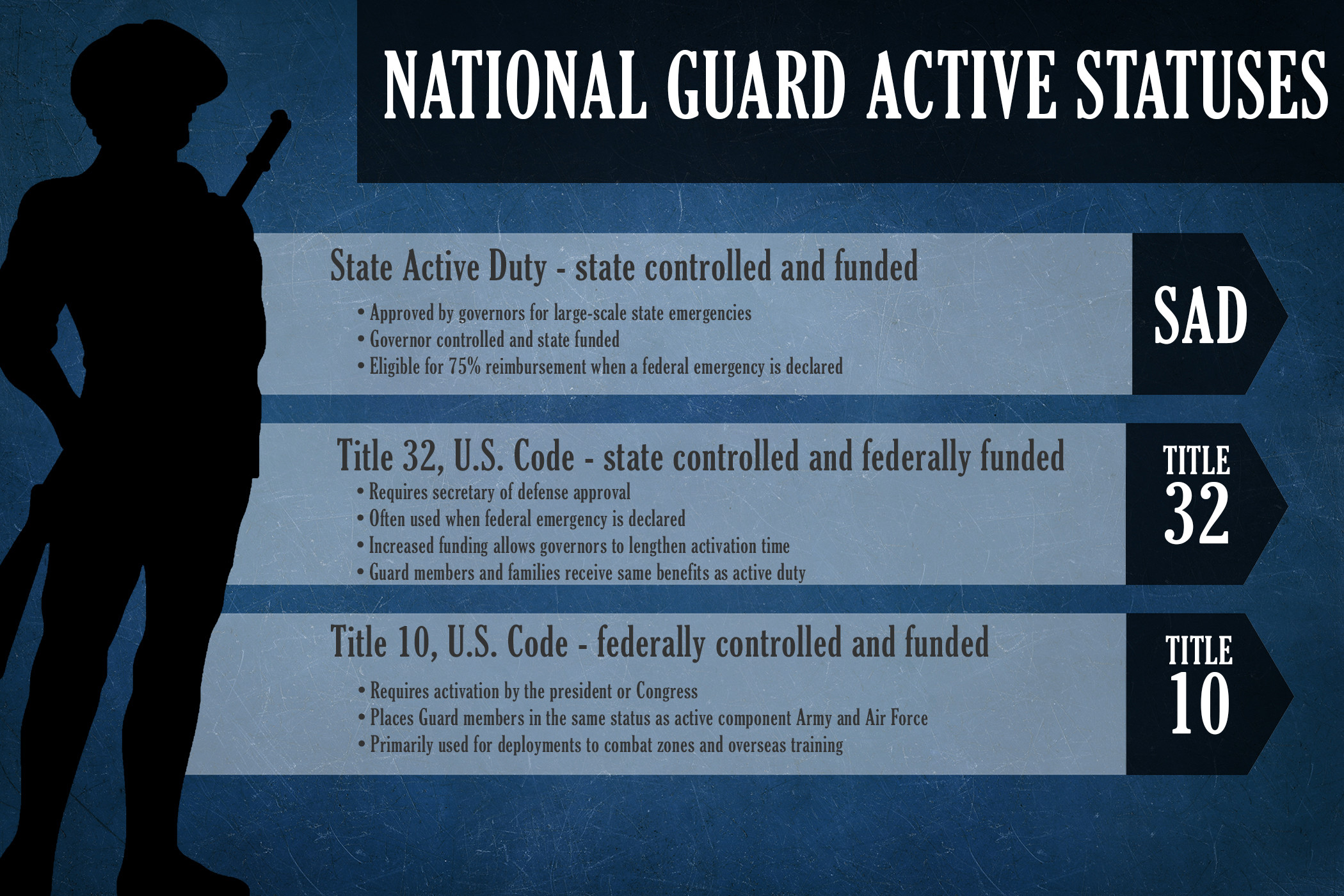
To date, a smaller number of Guard members have been activated under Title 32, 502 F, United States Code, or state activation that is federally funded. In this duty status, the primary change is the funding source. Guard members remain under the command and control of their governor. However, this type of activation requires approval by the secretary of defense and is generally used when a federal emergency is declared. Guard members and their families are also entitled to the same benefits as the active component.
Guard members in California, New York, and Washington state were recently placed under this duty status.
“The president recently approved 100 percent federal funding for the National Guard in some of the hardest-hit states,” said Lengyel. “Title 32 status is no different than when the National Guard responds to natural disasters [under SAD]. Just as important, the status change also ensures states will be reimbursed.
Allowing states to control response efforts makes sense, he added.
“The people who study emergency response say the overall success and effectiveness of the response effort is better when under state control,” Lengyel said. “Governor and adjutants general know best how to apply the resources and people to fix the problem in their state.”
The remaining option for National Guard activation is under Title 10, U.S. Code, or federal active duty, which can only be done by the president or Congress.
In this status, Guard members are on federal active duty – the same duty status as active component Army and Air Force members. It’s primarily used when Guard members deploy to combat zones or training missions overseas.
Federalizing Guard members for COVID-19 response efforts has not been discussed, said Lengyel.
“There has been no discussion about using the military to enforce shelter-in-place or quarantine operations,” Lengyel said.
As of Friday, nearly 12,300 Guard members in all 50 states, three territories and the District of Columbia are supporting COVID-19 response efforts.
By Sgt. 1st Class Whitney Hughes
Republished by permission of DOD


